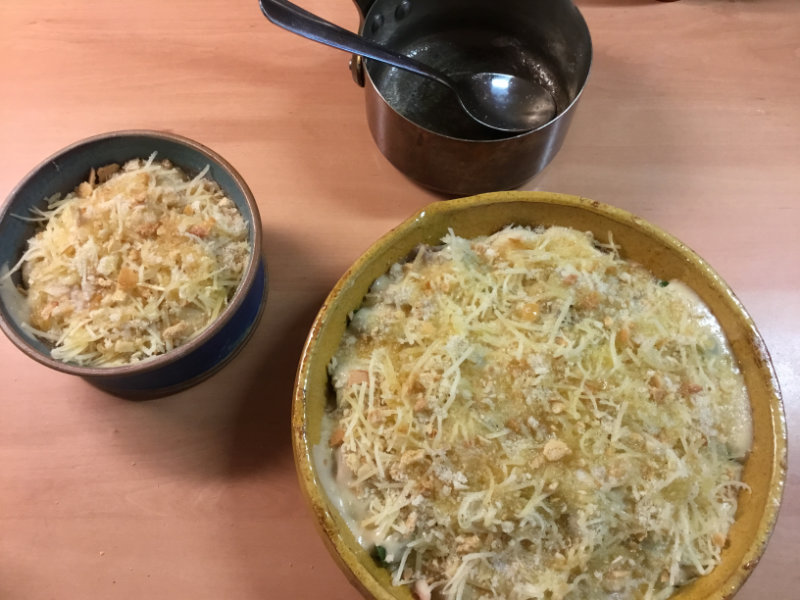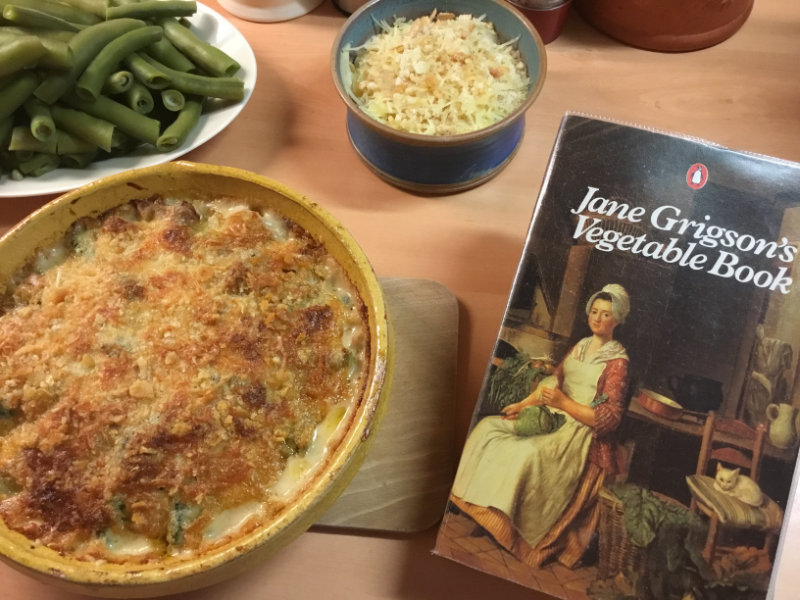With the apricot season starting, I thought I would remind you of a few ways these wonderful fruits can be enjoyed. I originally wrote this article back in 2015, and I still make the dishes I wrote about then. There are no apricots on my friends’ trees this year (the frost nipped at it during blossom time), but luckily there are plenty of apricots to be found in the twice weekly market in Saint-Chinian!
This year I was lucky enough to have the pick of the crop from a tree belonging to friends – they were away while their tree was full of ripe fruit!!


When I started to think about what to do with this bounty, the first thing which came to mind was apricot jam – beautifully orange coloured, and full of the flavours of the sun!!
Whenever I make jam these days, I try to use the kind of jam sugar where you can use 500g of sugar for 1kg of fruit, which makes for a much fruitier jam.
For this apricot jam I cut the apricots in half to remove the stones, and then cut each half again into four pieces.
Once all the apricots were cut, I mixed them with the sugar, and put them in the refrigerator to stand overnight.
Whilst the apricots are standing, the sugar draws out the juice, and the fruit tends to hold its shape better during cooking, rather than simply turning into mush. This time I also cracked some of the apricot stones open, and added the ‘almonds’ to the mixture, hoping they would impart some of their lovely almond flavour to the jam. Apricot ‘almonds’ do concern small amounts of cyanide, so if you are at all concerned about this, please leave them out.
The following morning the mixture looked like this:
The sugar had done its work, drawing out lots of juice from the apricots. Boiling time is only four minutes, so that the vitamins won’t get boiled to death altogether! The sugar which I use contains the right amount of pectin, so that the jam will always set. In France it is available under the name of Fruttina Extra, and you’ll be able to find the international websites for the company here.


Et voila!! Apricot jam always seems to froth quite a lot, so use a large pan and keep stirring! I potted my jam the moment the boiling time was over, in twist-off jars. It keeps well, except for when it gets eaten!! 🙂
I still had a fair amount of apricots left, so I started to wonder what else I could prepare with them.
Some time ago a friend told me about grilled peaches, so I thought I would try that with the apricots. For this recipe I chose the firmest apricots I had, as they could otherwise turn to mush very quickly. I pressed my trusted cast-iron griddle pan into action, and grilled the apricots on the pre-heated griddle, cut side down, for about 5 minutes.
I topped each apricot with some fresh goat’s cheese, and sprinkled them with freshly ground black pepper and fresh thyme leaves.
A final drizzle of olive oil, and I had a plate full of the most delicious appetizers.
They were every bit as good as they look, and really quick and easy to prepare!!
Another recipe I came across during my search was Mary Berry’s apricot frangipane tart. I followed the recipe pretty much to the letter, except for using fresh apricots where the recipe indicated tinned. And I’ll admit it right now: I used ready rolled pastry – time was short, as was the pastry!! I also ground my own almonds, which accounts for the darker colour of the frangipane.
The recipe is very straightforward and quick to make, especially if you use ready rolled pastry.



I was getting a little worried when I started to spread the frangipane mixture over the apricots – there seemed to be far too little!
But I needn’t have worried – Mary Berry is not called the ‘Queen of Baking’ for nothing!! After 40 minutes in the oven the tart was looking beautiful, and after a couple of hours of cooling off it tasted divine!! 🙂
There are many more delicious recipes out there, which use apricots – what is your favourite??


































































